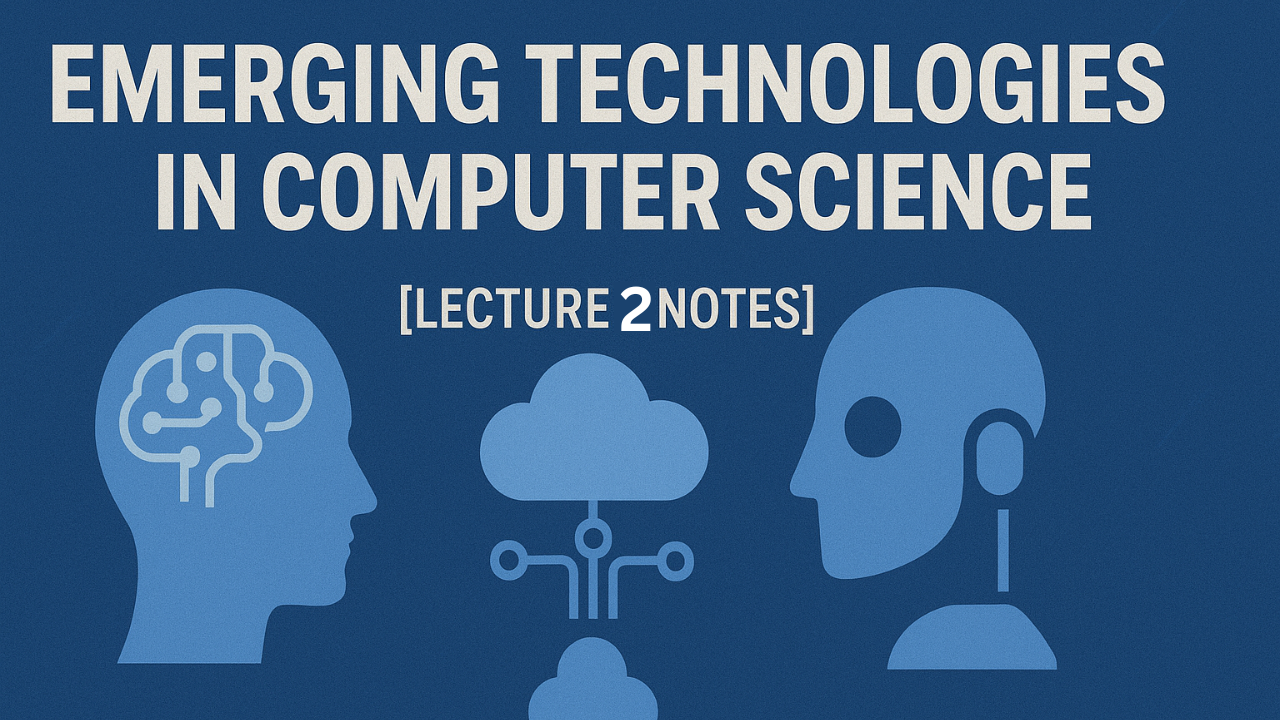Introduction
These notes are prepared from a lecture delivered by Salman Ahmad, a teacher and web developer. In this session, we focused on the subfields of Artificial Intelligence (AI) which form the foundation of modern computing applications. These notes aim to help students build a clear understanding of AI concepts, their real-world usage, and applications in daily life.
Artificial Intelligence is not a single technology but a combination of several subfields. Each subfield plays an important role in making machines smarter, more efficient, and capable of solving complex problems. Here, we will study five major subfields: Machine Learning, Deep Learning, Natural Language Processing, Computer Vision, and Robotics.
Full Definitions — Subfields of AI
Machine Learning (ML)
A branch of AI where computers learn from data and past experiences to improve performance over time without being explicitly programmed. Computers identify patterns and make predictions based on examples.
Examples:
- Email spam detection automatically filters unwanted emails.
- Movie recommendations on platforms like Netflix.
- Stock price predictions using historical data.
Deep Learning (DL)
A specialized part of machine learning that uses neural networks inspired by the human brain. It can process large amounts of data to recognize complex patterns and make decisions more accurately.
Examples:
- Self-driving cars recognizing roads and pedestrians.
- Voice assistants like Siri and Google Assistant understanding speech.
Natural Language Processing (NLP)
AI technology that allows computers to understand, interpret, and respond in human language.
Examples:
- Chatbots answering customer queries online.
- Auto-complete suggestions in messaging apps.
- Language translation using Google Translate.
Computer Vision
AI technology that enables computers to analyze, interpret, and understand images and videos. It helps in tasks like object recognition, facial recognition, and visual data analysis.
Examples:
- Facial recognition for unlocking phones.
- Security cameras detecting suspicious activity.
- Image-based search engines like Google Images.
Robotics
The science and technology of designing, building, and programming robots. Robots can perform tasks autonomously or semi-autonomously, and AI can help them make decisions and adapt to new situations.
Examples:
- Cleaning robots for homes.
- Industrial robots assembling cars in factories.
- Delivery drones navigating autonomously to deliver packages.
Quick Notes — Subfields of AI
- Machine Learning (ML): AI system learns from data and improves over time without explicit programming.
- Email spam detection automatically filters unwanted emails.
- Movie recommendations on platforms like Netflix.
- Stock price predictions using historical data.
- Deep Learning (DL): A special type of ML using neural networks inspired by the human brain.
- Self-driving cars recognizing roads and pedestrians.
- Voice assistants like Siri and Google Assistant understanding speech.
- Natural Language Processing (NLP): Helps computers understand and respond in human language.
- Chatbots answering customer queries online.
- Auto-complete suggestions in messaging apps.
- Language translation using Google Translate.
- Computer Vision: Enables computers to “see” and analyze images and videos.
- Facial recognition for unlocking phones.
- Security cameras detecting suspicious activity.
- Image-based search engines like Google Images.
- Robotics: Combines AI with machines to perform tasks automatically.
- Cleaning robots for homes.
- Industrial robots assembling cars in factories.
- Delivery drones navigating autonomously to deliver packages.
Examples:
Examples:
Examples:
Examples:
Examples:
MCQs — Subfields of AI
- Which AI makes computers learn from data without being told exactly what to do?
a) Deep Learning
b) Machine Learning ✅
c) Computer Vision
d) Robotics - Deep Learning is inspired by:
a) Traffic lights
b) The human brain ✅
c) Computers only
d) Robots - Which AI helps computers understand human language?
a) Machine Learning
b) NLP ✅
c) Computer Vision
d) Robotics - Computer Vision helps computers:
a) Type messages
b) Understand images and videos ✅
c) Learn from data
d) Drive robots - Robotics with AI allows robots to:
a) Only follow orders
b) Perform tasks and make decisions ✅
c) Play music only
d) Only watch videos - Example of NLP in daily life:
a) Siri or Alexa
b) Phone predictive text
c) Both a and b ✅
d) None
Summary
To sum up, Artificial Intelligence is divided into important subfields such as Machine Learning, Deep Learning, NLP, Computer Vision, and Robotics. Each plays a unique role in shaping the digital world and making machines more intelligent. By understanding definitions, quick notes, and practicing MCQs, students will gain a strong foundation in Computer Science.
Lectures
Related Posts
- Top 10 Programming Languages in 2025
- How AI Will Replace and Create Jobs by 2030
- Best Online Courses for High-Paying Jobs in 2025
Frequently Asked Questions (FAQs)
Machine Learning, because it powers recommendation systems, fraud detection, and many daily-life apps.
Deep Learning is a subset of Machine Learning that uses neural networks for complex tasks.
NLP helps machines understand and respond to human language, like chatbots or translators.
Computer Vision processes and interprets images/videos to identify objects, people, or scenes.
Robotics is used in homes (cleaning robots), industries (manufacturing robots), healthcare (surgery robots), and delivery systems (drones).
